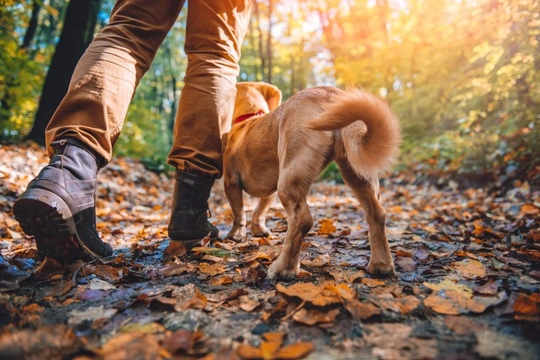
Kennel Club issues timely reminder to dog owners about Alabama rot as peak season for the condition
Alabama rot is a health condition that we in the UK have only known about for a few years, because until its relatively recent arrival on UK shores, the condition was thought to be limited to dogs in the USA.
This very serious condition is one that has caused great concern to dog owners over the last few years, due to its severity and the relatively unknown nature of the condition, and all dog owners in the UK should learn a little bit about Alabama rot, how dogs develop it, and what steps can be taken to prevent it.
In December 2018, the Kennel Club in the UK issued a reminder to dog owners to be alert to the symptoms of Alabama rot in dogs, as occurrence rates of the condition in the UK tend to follow a seasonal pattern, across which this time of the year is considered to be most risky.
In this article we will explain more about what Alabama rot in dogs is, how dogs might develop it, and how to spot the symptoms of Alabama rot in dogs. Read on to learn more.
What is Alabama rot?
The scientific name for Alabama rot is cutaneous and renal glomerular vasculopathy or CRGV, and the condition was unheard of within dogs in the UK until 2012, when the first confirmed case occurred over here. The condition is somewhat seasonal in nature, with the months of the year that see the highest occurrence rates of the condition being between November and May.
Alabama rot leads to damage in the lining of the dog’s blood vessels within their kidneys and also on the surface of the skin, which results in kidney damage and the development of ulcers on the skin itself. Alabama rot is often fast in onset, and may lead to the rapid onset of acute kidney failure, which is often terminal.
Because the condition is such a recent one to be recognised in the UK and because it can be so fast in onset, Alabama rot has a high mortality rate in affected dogs, but prompt identification of the condition’s symptoms and their speedy diagnosis by an experienced vet can provide an affected dog with the best possible chances of survival.
How do dogs catch Alabama rot?
One of the main problems with Alabama rot in the UK is that nobody knows for sure what causes it, or how and where dogs that fall ill with the condition may be exposed to it or contract it.
We aren’t even sure what type of illness Alabama rot is – evidence has yet to be found to point researchers to the condition’s origins, and we don’t even know if it is viral, bacterial, fungal, or caused by something else entirely.
However, there is a significant body of circumstantial evidence to suggest that dogs develop Alabama rot through contact with mud, water or marshy areas of land, and Alabama rot cases often develop in localised clusters in certain parts of the country, and in some cases, all or most of the affected dogs in certain areas may have recently visited the same areas of land and water.
One other point to note about Alabama rot in the UK is that it doesn’t affect all dogs – in most confirmed cases, multiple other dogs that have walked in the same areas as the affected dog or even that live and walk with an affected dog have not developed the condition themselves.
What are the symptoms of Alabama rot in dogs?
Because the kidney failure that Alabama rot causes in dogs isn’t something that you can diagnose simply by looking at the dog, the condition often proves fatal as affected dogs have usually entered the early stages of kidney failure before they are formally diagnosed.
However, before kidney failure develops, affected dogs first develop the skin lesions and ulcers that are the signature of Alabama rot, which means that this is the number one Alabama rot symptom to watch out for.
Alabama rot skin lesions in dogs look like ulcers, and may be irritable to the dog, causing them to chew and lick at the affected areas. The lesions often begin as inflamed raised swellings that are normally round, and that commonly develop on the dog’s lower legs, stomach and face.
If you spot unexplained skin lesions or ulcers on your dog, contact your vet immediately and explain your concerns – you might be saving your dog’s life.
Can you prevent your dog catching Alabama rot?
There is no sure-fire way to prevent a dog from catching Alabama rot, because we don’t really know what causes it and so, there is no definitive guidance on how to avoid it.
Keeping your dog out of the worst of the mud and marshy areas you walk by and washing their legs and mucky areas off when you get back from a walk can help, but whether or not any given dog develops the disorder appears to be something of a lottery, and so this is no guarantee of safety.
It is also worth keeping in contact with your local vet and dog owner groups to watch out for known cases appearing in your local area, which may help you to pinpoint risky areas to take your dog that can be avoided.



